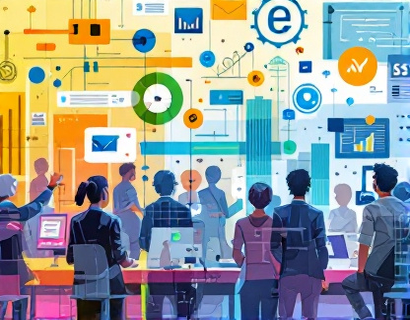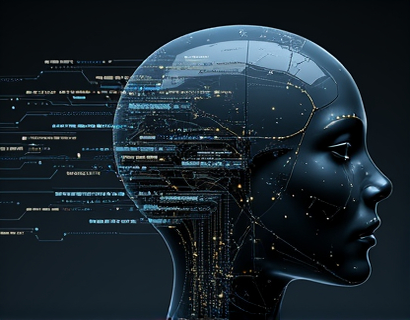Unlocking Cognitive Potential: A Journey Through Engaging Learning Resources
In an era where knowledge is power, the ability to continuously learn and adapt is more crucial than ever. The human brain, once thought to have a fixed capacity for learning, has been shown through recent research to possess a remarkable ability to grow and change throughout life. This phenomenon, known as neuroplasticity, opens the door to endless possibilities for personal and professional development. Engaging courses and resources designed to stimulate cognitive growth can significantly enhance this natural process, allowing individuals to unlock their full potential and transform their learning journey.
The concept of lifelong learning is not new, but the tools and platforms available today make it more accessible and effective than ever before. A dynamic learning portal, rich with a diverse array of courses and resources, stands at the forefront of this revolution. Such a platform is meticulously curated to offer content that not only educates but also challenges the mind, fostering cognitive flexibility and expanding capabilities. For those dedicated to personal growth and continuous improvement, this kind of resource is invaluable.
Understanding Cognitive Flexibility
Cognitive flexibility refers to the brain's ability to switch between thinking about different concepts, and to think about multiple concepts simultaneously. It is a key component of executive function, which encompasses a range of high-level mental skills including planning, problem-solving, and decision-making. Enhancing cognitive flexibility through targeted learning experiences can lead to improved adaptability, creativity, and overall mental agility.
Engaging courses that challenge the brain to think in new ways, solve complex problems, and integrate diverse pieces of information can significantly boost cognitive flexibility. For instance, courses that combine elements of psychology, neuroscience, and practical applications can provide a holistic approach to learning, making the process more effective and enjoyable.
Benefits of Engaging Learning Resources
The benefits of engaging with high-quality learning resources are manifold. Firstly, they provide structured and guided learning paths that cater to various learning styles and paces. This personalization ensures that learners can maximize their understanding and retention of the material. Secondly, interactive elements such as quizzes, simulations, and collaborative projects make learning more engaging and memorable.
Moreover, access to a wide range of topics and disciplines allows learners to explore their interests and discover new passions. This broad exposure can lead to interdisciplinary insights and innovative thinking, which are highly valued in today's rapidly evolving job market. Whether one is looking to advance in their current career or transition to a new field, these resources offer the tools necessary for success.
Designing an Effective Learning Journey
To truly harness the potential of engaging learning resources, it is essential to approach the learning journey with a clear strategy. Here are some steps to consider:
- Set Clear Goals: Define what you want to achieve through your learning journey. Whether it's acquiring a new skill, enhancing a specific area of knowledge, or improving cognitive abilities, clear goals provide direction and motivation.
- Assess Your Current Level: Understand your starting point to choose courses and resources that are appropriately challenging. This helps in avoiding frustration and ensures steady progress.
- Create a Balanced Schedule: Integrate learning into your daily routine, balancing different subjects and activities to keep the mind engaged without causing burnout.
- Practice Active Learning: Engage actively with the material through note-taking, summarizing, teaching others, and applying what you've learned in real-world scenarios.
- Seek Feedback and Reflect: Regularly seek feedback from peers or mentors and take time to reflect on your learning process. This helps in identifying areas for improvement and reinforcing gains.
By following these steps, learners can create a structured and effective learning journey that not only achieves their goals but also fosters a love for continuous learning.
Resources for Cognitive Enhancement
The types of resources available on a dynamic learning portal are diverse and comprehensive. Here are some key categories and examples:
- Courses on Cognitive Science and Neuroscience: These courses delve into the workings of the brain, providing a solid foundation for understanding how learning and memory function. Topics may include neural plasticity, memory techniques, and cognitive biases.
- Problem-Solving and Critical Thinking: Courses in this area focus on developing the ability to analyze complex situations, identify patterns, and devise effective solutions. Examples include logic puzzles, case studies, and strategic games.
- Creative Thinking and Innovation: These resources encourage out-of-the-box thinking and creativity. Activities might involve brainstorming sessions, design thinking workshops, and artistic expression.
- Language and Communication Skills: Enhancing language proficiency and communication abilities is crucial for effective interaction and leadership. Resources can range from language learning apps to public speaking courses.
- Mindfulness and Mental Well-being: Courses focusing on mindfulness, meditation, and stress management can improve focus, reduce anxiety, and enhance overall cognitive performance.
Each of these resources is designed to challenge and expand the mind, contributing to a well-rounded and dynamic learning experience.
The Role of Technology in Learning
Technology plays a pivotal role in modern learning, offering tools and platforms that make education more accessible and interactive. Adaptive learning technologies, for instance, tailor the learning experience to the individual's needs, providing personalized content and pacing. This not only makes learning more efficient but also more enjoyable.
Online communities and forums provide a space for learners to connect, share insights, and collaborate on projects. These interactions can lead to a deeper understanding of the material and foster a sense of community among learners. Additionally, multimedia resources such as videos, podcasts, and interactive simulations cater to different learning styles, ensuring that everyone can find a format that suits them best.
Embracing a Growth Mindset
A crucial mindset for maximizing the benefits of engaging learning resources is the growth mindset. Coined by psychologist Carol Dweck, a growth mindset is the belief that abilities and intelligence can be developed through dedication and hard work. This contrasts with a fixed mindset, where abilities are seen as static and unchangeable.
Adopting a growth mindset involves embracing challenges, persisting in the face of setbacks, seeing effort as the path to mastery, learning from criticism, and finding inspiration in the success of others. This mindset not only enhances the learning experience but also leads to greater resilience and lifelong learning habits.
Conclusion
In conclusion, the journey of unlocking cognitive potential through engaging courses and resources is a rewarding and transformative experience. By leveraging the power of neuroplasticity and adopting a structured approach to learning, individuals can significantly enhance their cognitive abilities and achieve their personal and professional goals. The resources available today offer a wealth of opportunities for those committed to lifelong learning and personal development. Embrace the journey, stay curious, and let the pursuit of knowledge lead to a more fulfilling and successful life.










































